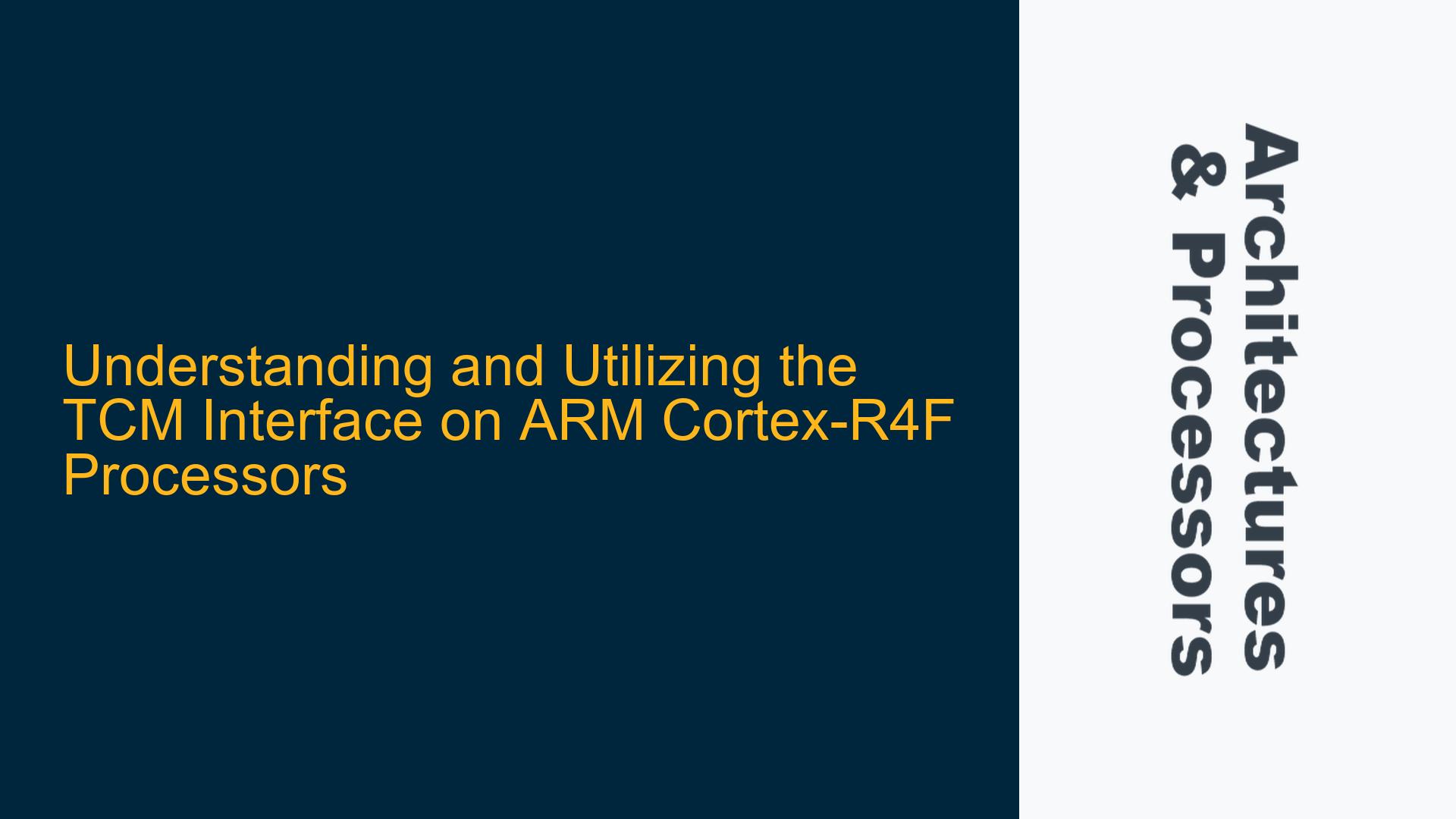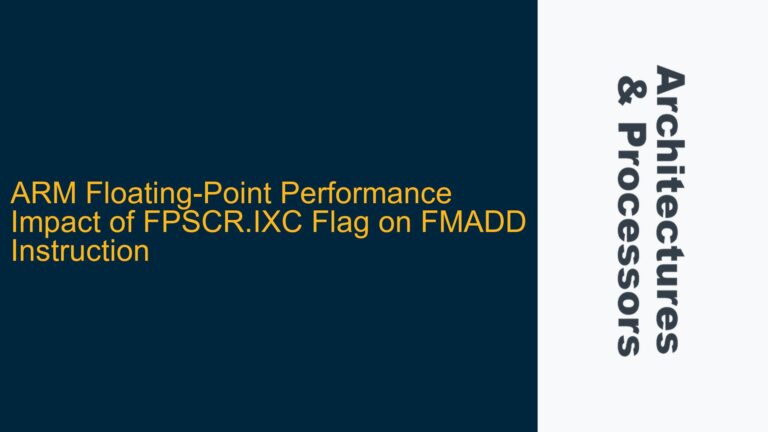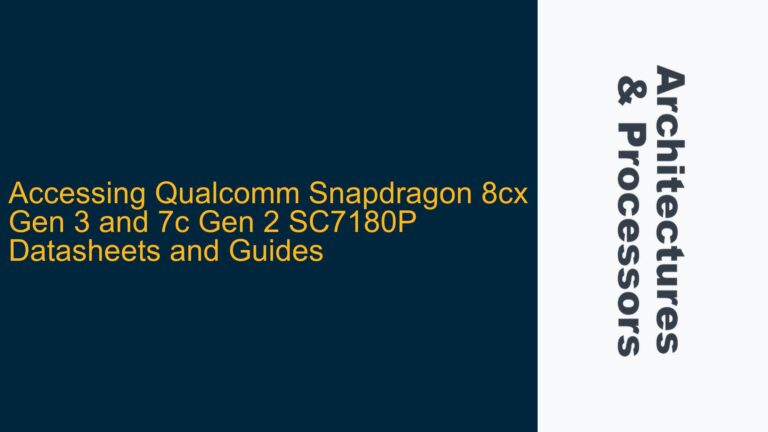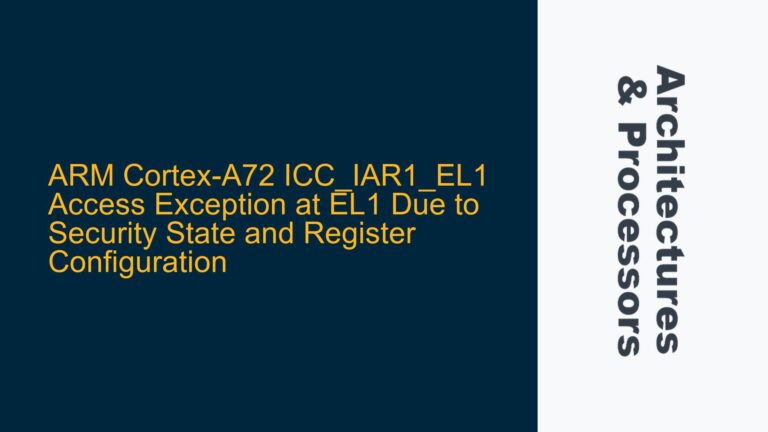ARM Cortex-R4F TCM Interface Configuration and Timing Challenges
The Tightly Coupled Memory (TCM) interface on the ARM Cortex-R4F processor is a critical component for achieving high-performance, low-latency memory access in real-time embedded systems. TCMs, including ATCM (Advanced TCM) and BTCM (Base TCM), are designed to provide fast and deterministic access to critical code and data, which is essential for applications requiring real-time responsiveness. However, configuring and utilizing the TCM interface effectively can be challenging, particularly when dealing with interface timing and integration with the rest of the system.
The ARM Cortex-R4F Technical Reference Manual provides a high-level overview of the TCM interface, but it lacks detailed timing specifications. This omission can lead to confusion and implementation difficulties, especially for developers who are new to the Cortex-R4F architecture or who are transitioning from other ARM cores with different TCM implementations. The absence of precise timing details can result in suboptimal performance, data corruption, or even system failures if the TCM interface is not configured correctly.
To address these challenges, it is essential to understand the architectural principles behind the TCM interface, the potential pitfalls in its configuration, and the best practices for ensuring reliable operation. This guide will delve into the specifics of the ARM Cortex-R4F TCM interface, explore the possible causes of common issues, and provide detailed troubleshooting steps and solutions.
Memory Access Latency and Interface Timing Ambiguities
One of the primary challenges in utilizing the TCM interface on the ARM Cortex-R4F is the ambiguity surrounding memory access latency and interface timing. The TCM interface is designed to provide low-latency access to critical code and data, but the exact timing characteristics are not explicitly documented in the Technical Reference Manual. This lack of detail can lead to several issues, including:
-
Incorrect Assumptions About Latency: Developers may assume that the TCM interface provides a fixed latency for all memory accesses, which is not necessarily the case. The actual latency can vary depending on factors such as the memory type (ATCM vs. BTCM), the access type (read vs. write), and the system configuration (e.g., clock speed, bus arbitration).
-
Timing Violations: Without precise timing information, it is difficult to ensure that the TCM interface operates within the required timing constraints. This can lead to timing violations, which may cause data corruption, system instability, or even hardware damage in extreme cases.
-
Integration Challenges: The TCM interface must be integrated with other system components, such as the AXI bus, DMA controllers, and peripherals. The lack of detailed timing information can make it challenging to design a system that meets all timing requirements, particularly in complex designs with multiple memory interfaces and high-speed data transfers.
To mitigate these issues, it is essential to adopt a systematic approach to understanding and managing the TCM interface timing. This includes analyzing the available documentation, conducting empirical testing, and leveraging best practices from similar ARM cores.
Empirical Testing and Best Practices for TCM Interface Configuration
Given the lack of detailed timing information in the ARM Cortex-R4F Technical Reference Manual, empirical testing is a crucial step in understanding and optimizing the TCM interface. By conducting controlled experiments, developers can gather data on the actual latency and timing characteristics of the TCM interface under various conditions. This data can then be used to inform the system design and ensure that the TCM interface operates within the required timing constraints.
Step 1: Baseline Performance Measurement
The first step in empirical testing is to establish a baseline performance measurement for the TCM interface. This involves measuring the latency and throughput of memory accesses under typical operating conditions. The following steps outline the process for conducting baseline performance measurements:
-
Configure the TCM Interface: Ensure that the TCM interface is properly configured according to the system requirements. This includes setting the appropriate memory regions for ATCM and BTCM, configuring the access permissions, and enabling any necessary cache or prefetch mechanisms.
-
Develop Test Code: Write test code that performs a series of memory accesses to the TCM regions. The test code should include a mix of read and write operations, as well as different access patterns (e.g., sequential, random) to capture the full range of latency and throughput characteristics.
-
Measure Latency and Throughput: Use a high-resolution timer or performance monitoring unit (PMU) to measure the latency and throughput of the memory accesses. Record the results for each access pattern and operation type.
-
Analyze the Results: Analyze the measured data to identify any anomalies or unexpected behavior. Compare the results with the expected performance based on the system clock speed and memory specifications.
Step 2: Stress Testing and Corner Case Analysis
Once the baseline performance has been established, the next step is to conduct stress testing and corner case analysis. This involves subjecting the TCM interface to extreme conditions, such as high memory traffic, simultaneous access from multiple masters, and varying clock speeds. The goal is to identify any potential timing violations or performance bottlenecks that may not be apparent under normal operating conditions.
-
High Memory Traffic: Generate high memory traffic by increasing the frequency and volume of memory accesses. This can be achieved by running multiple threads or processes that access the TCM regions simultaneously.
-
Multiple Masters: Configure the system to allow multiple masters (e.g., CPU, DMA controllers) to access the TCM regions concurrently. Monitor the system for any conflicts, arbitration delays, or data corruption.
-
Varying Clock Speeds: Test the TCM interface at different clock speeds to determine how the latency and throughput vary with frequency. This is particularly important for systems that operate at variable clock speeds or that use dynamic frequency scaling.
-
Corner Case Analysis: Identify and test corner cases, such as boundary conditions (e.g., accessing the last byte of a memory region), misaligned accesses, and error conditions (e.g., accessing a protected or invalid memory region).
Step 3: Optimization and Fine-Tuning
Based on the results of the baseline performance measurement and stress testing, the final step is to optimize and fine-tune the TCM interface configuration. This may involve adjusting the memory access patterns, modifying the system clock speed, or implementing additional synchronization mechanisms to ensure reliable operation.
-
Optimize Memory Access Patterns: Analyze the memory access patterns and optimize them to minimize latency and maximize throughput. This may involve reordering memory accesses, using burst transfers, or prefetching data.
-
Adjust Clock Speed: If the system supports dynamic frequency scaling, adjust the clock speed to achieve the optimal balance between performance and power consumption. Ensure that the TCM interface operates within the required timing constraints at all clock speeds.
-
Implement Synchronization Mechanisms: If multiple masters are accessing the TCM regions, implement synchronization mechanisms (e.g., semaphores, mutexes) to prevent conflicts and ensure data integrity.
-
Validate the Configuration: After making any adjustments, validate the TCM interface configuration by repeating the baseline performance measurement and stress testing. Ensure that the system meets all timing requirements and operates reliably under all conditions.
Conclusion
The TCM interface on the ARM Cortex-R4F processor is a powerful tool for achieving high-performance, low-latency memory access in real-time embedded systems. However, the lack of detailed timing information in the Technical Reference Manual can make it challenging to configure and utilize the TCM interface effectively. By adopting a systematic approach that includes empirical testing, stress testing, and optimization, developers can overcome these challenges and ensure that the TCM interface operates reliably and efficiently.
This guide has provided a detailed overview of the ARM Cortex-R4F TCM interface, explored the potential causes of common issues, and outlined a comprehensive set of troubleshooting steps and solutions. By following these best practices, developers can unlock the full potential of the TCM interface and build robust, high-performance embedded systems.






